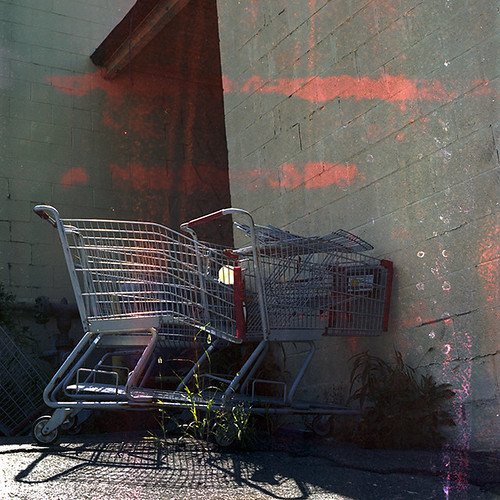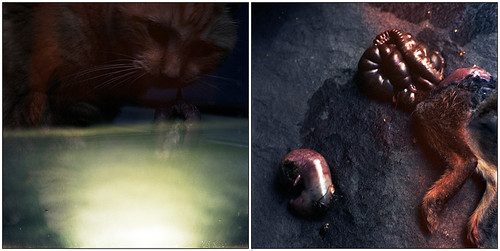Heat fogs film and creates other "interestingness", which is why most people store it in the fridge or freezer (but don’t freeze Polaroid!). It’s impossible to predict exactly what will happen to any given roll of film, so don’t mistake this as a "this is what you’ll get if you take this emulsion and expose it to this amount of heat" reference. It’s different every time, this is just meant to show some of the different effects I’ve run into. Most of these are from a bag of rolls I left in a hot car in summer: same conditions, many of the same emulsion even, different results.
Kodak Portra 400UC 120 in a Holga left out in hot summer sun for about an hour, after which the camera was hot to the touch. This is the frame that was advanced, ready to be shot, and therefore got the most heat exposure. Curiously, the rest of the roll seemed unaffected.
The distinct red spots are from the heat and the vertical line of white spots is chemical residue from crappy processing. From here on out, the film was left in a hot car, not sure for how long.
Less-defined red areas. Kodak Portra 400VC, 120.
Mottling. Kodak Portra 400UC, 135.
Blue edge. Kodak Portra 400VC, 120.
Rusty swath. Kodak Portra 400VC, 120.
Rusty swath and mottling. Kodak Portra 400VC, 120.
More examples in the Heat-Damaged Film group on Flickr.








